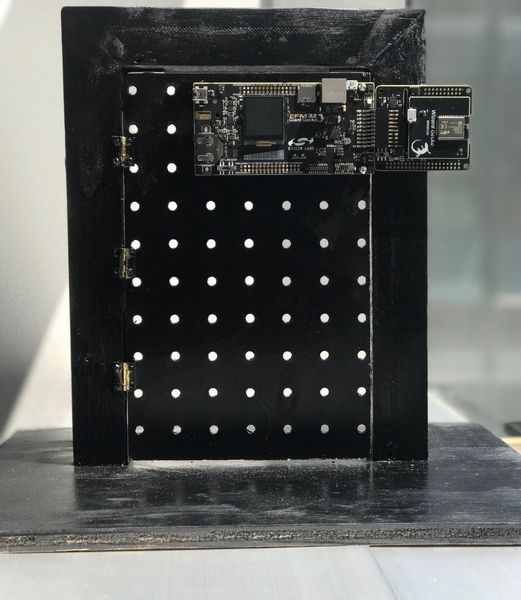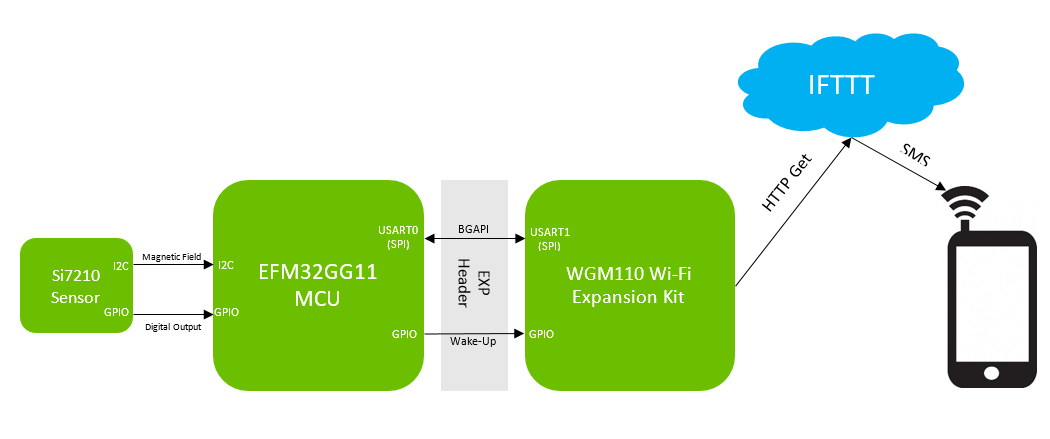- Home
- Symmetry Blog
- From Silicon Labs: Building a Magnetic Alarm System for the Giant Gecko Series 1 STK
From Silicon Labs: Building a Magnetic Alarm System for the Giant Gecko Series 1 STK
About Symmetry Electronics
Established in 1998, Symmetry Electronics, a Division of Braemac, is a global distributor of electronic components and systems. Combining premier components and comprehensive value-added services with an expert in-house engineering team, Symmetry supports engineers in the design, development, and deployment of a broad range of connected technologies.
Exponential Technology Group Member
Acquired by Berkshire Hathaway company TTI, Inc. in 2017, Symmetry Electronics is a proud Exponential Technology Group (XTG) member. A collection of specialty semiconductor distributors and engineering design firms, XTG stands alongside industry leaders TTI Inc., Mouser Electronics, and Sager Electronics. Together, we provide a united global supply chain solution with the shared mission of simplifying engineering, offering affordable technologies, and assisting engineers in accelerating time to market. For more information about XTG, visit www.xponentialgroup.com.
This project is created by Silicon Labs’ summer intern Rikin Tanna.
Project:
A magnetic alarm system uses a Hall Effect magnetic sensor and a supporting magnet attached to the door frame to determine if the door is opened or closed. This project includes a notification service that sends a message to your mobile phone when the alarm is triggered, for added security. By removing any moving parts from the system, the magnetic alarm system proves to be very reliable.

Materials Used:
EFM32 Giant Gecko GG11 Starter Kit (SLSTK3701A)
WGM110 Wi-Fi Expansion Kit (SLEXP4320A)
Hall Effect Magnetic Sensor (Si7210)
Background:
My goal with this project was to demonstrate an important use case for the Si7210 as a component of an alarm system. Given that Silicon Labs is an IOT company, I figured it would be beneficial to use IFTTT, an IOT workflow service that connects two or more internet-enabled devices, to demonstrate our GG11 STK being used with an established IOT enabler. With this service included, I could also showcase the WGM-110 Wi-Fi Expansion kit working with the GG11 STK. The GG11 STK was chosen due to its onboard Si7210 sensor, its compatibility with the WGM-110 Wi-Fi Expansion kit, and its recent launch (to expand its demo portfolio).
Operation:
The demo is split into 3 phases:
- WiFi-Setup – The first phase of the demo configures the WGM110. Here, the WGM110 boots up, sets the operating mode to client, connects to the user’s access point, and enters a low power state (Power Mode 4) to wait for further command. As it configures, status messages will display to the LCD as the GG11 receives responses from the WGM110.
- Calibration – The second phase of the demo calibrates the Si7210 digital output pin thresholds based on the user’s “closed door” position (magnetic field reading).
- Operation – The third phase is operation. Closing and opening the door (crossing the magnetic field threshold) will cause the Si7210 digital output pin to toggle, which will result in LED0 flashing. Additionally, the output pin will toggle if a second magnet is brought in to try and tamper with the alarm system. When the alarm is triggered, the GG11 will command the WGM110 to contact the IFTTT servers to send a message to the user’s mobile phone.
Explanation:
GG11 STK:
The GG11 STK was programmed using Simplicity Studio. Simplicity provides an ample array of examples and demos to help any beginners get started with Silicon Labs MCUs (this was my first experience with SiLabs products).
Below is a representation of data flow for the project.

WGM110:
The WGM110 is a versatile part, as it can act as Wi-Fi client, a local access point, or a Wi-Fi Direct (Wi-Fi P2P) interface. In this system, the WGM110 acts as a client, and it is a slave to the host GG11 MCU. Communication is based on the BGAPI command-response protocol via SPI on a UART terminal. Debugging this proved to be difficult, as there are two individual MCUs involved, but the Salae Logic analyzer allowed me to view the communication between the devices to help fix any issues I encountered. Below is a capture of a typical boot correspondence.


When the alarm is triggered, the WGM110 establishes a TCP connection with the IFTTT server and sends an HTTP Get request to the extension specified by the IFTTT applet I have created. Unfortunately, IFTTT allows free users to only create private applets, but creating the applet was simple: step by step instructions for creating my applet can be found in the project ReadMe file.
Si7210:
The GG11 STK comes with an onboard Si7210 Hall Effect Magnetic sensor. It can detect changes in magnetic field to the hundredth of Millitesla (mT), which is more than enough sensitivity for this use case. The part has multiple OTP registers that store various part configurations, and the calibration process specified earlier writes to the register that determines the digital output threshold through I2C. The Si7210 also features a tamper threshold, in case someone tries to fool the alarm by using a second magnet to replace the original magnet as the door opens. This threshold is configured to be slightly greater than the original calibration threshold to detect even the slightest tamper. When either threshold is crossed, the part automatically toggles an OTP digital output pin, allowing any programmer to easily interface the sensor into their designs.
Using this Project:
This project provides a good starting point for anyone who wants to utilize the Si7210 Hall Effect sensor and/or the WGM110 Wi-Fi Expansion kit working in sync with the GG11 STK. The expansion kit can also be used with the PG1 or PG12 boards, but my code may require a few changes in initialization, depending on which specific peripherals are used.
Below is a slide that details all the various features that I utilized for each part. Feel free to download the project (link below) and use my code to get started on your own projects!
Source Files:


